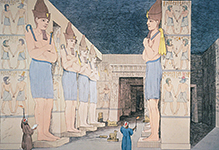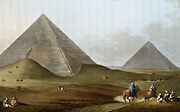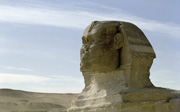
Egypt
Birth and Death,Cult and Gods,Pharaos and Officials,Pyramids and Temples,Daily Life.

#03010161
Ramses III before the gods of Memphis,20th dynasty,around 1150 BCE.At 42 metres,...

#03010162
Vignette of the Book of the Dead of the priestess Nesitanebtashru, 21st Dynasty,...

#03010163
Coffin of Hor,22nd dynasty,around 850 BCE. The falcon-headed god Horus is shown...

#03010164
Lid of the coffin of Hor,22nd dynasty,around 850 BCE. The falcon-headed god Hor...

#03010165
Coffin of Hor,22nd dynasty,around 850 BCE. The falcon-headed god Horus is shown...

#03010166
Coffin of Hor,22nd dynasty,around 850 BCE. The falcon-headed god Horus is shown...

#03010167
Coffin of Hor,22nd dynasty,around 850 BCE. The falcon-headed god Horus is shown...

#03010168
Faience amulet in the shape of an ankh, 25th dynasty to Late Period, about 700-...

#03010169
Head of a pharaoh,26th - 30th dynasty,around 600-340 BCE. The green siltstone b...

#030102 1
Ivory figure of a woman with incised features, from Badari, Egypt, Predynastic P...

#030102 2
Red granite block of Khufu (Cheops), Egyptian, 4th Dynasty, c2500 BC. Block bear...

#030102 4
Calcite headrest, Egyptian, Old Kingdom, c2350 BC. This headrest is quite simple...

